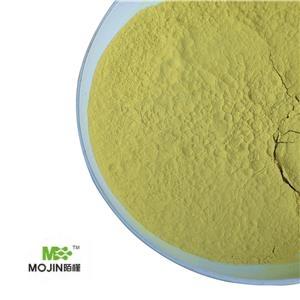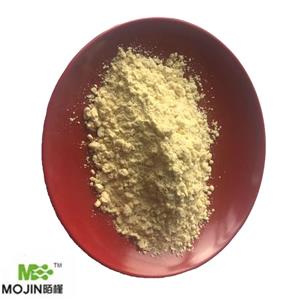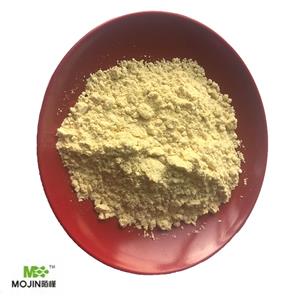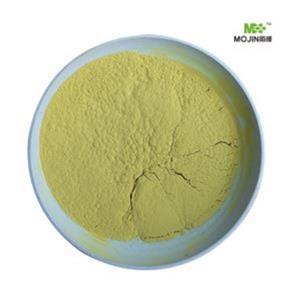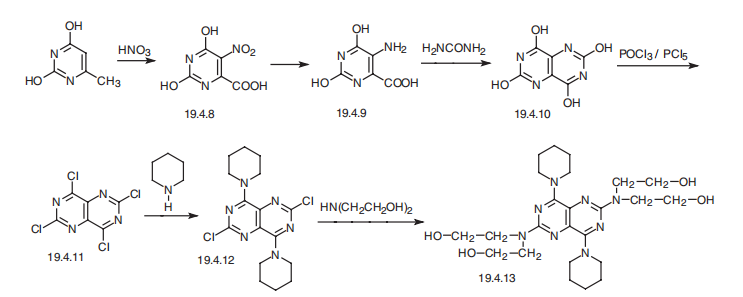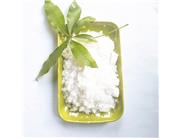| Product Name | Dipyridamole |
| CAS No | 58-32-2 |
| EC-No | 200-374-7 |
| Min. Order | 1KG |
| Purity | 99% |
| Supply Ability | 50000KG/month |
| Release date | 2025/02/21 |
| CAS: | 58-32-2 |
| MF: | C24H40N8O4 |
| MW: | 504.63 |
| EINECS: | 200-374-7 |
| Product Categories: | Heterocycle-Pyrimidine series;Organics;Inhibitors;Intermediates & Fine Chemicals;Pharmaceuticals;Phosphodiesterase Inhibitors;Cyclic Nucleotide Metabolism;G Proteins and Cyclic Nucleotides;Cyclic Nucleotide related;Pharmaceutical intermediate;PERSANTINE;Cardiovascular APIs;Pyridines;API;58-32-2 |
| Mol File: | 58-32-2.mol |
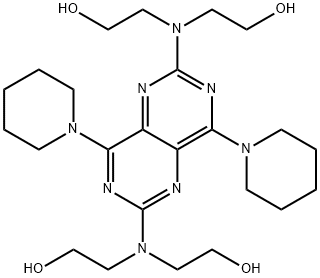 | |
| Dipyridamole Chemical Properties |
| Melting point | 165-166 °C (lit.) |
| Boiling point | 593.96°C (rough estimate) |
| density | 1.2046 (rough estimate) |
| refractive index | 1.6910 (estimate) |
| storage temp. | room temp |
| solubility | DMSO: soluble |
| form | powder |
| pka | pKa 6.4 (Uncertain) |
| color | yellow |
| Water Solubility | Soluble in chloroform, methanol, dilute acids, ethanol. Slightly soluble in water. |
| Merck | 14,3346 |
| Stability: | Stable for 1 year from date of purchase as supplied. Solutions in DMSO or ethanol may be stored at -20°C for up to 3 months. |
| NIST Chemistry Reference | Pyrimidine, 2,6-bis(diethanolamino)-4,8-dipiperidino-pyrimido-(5,4-d)-(58-32-2) |
| Dipyridamole Usage And Synthesis |
| Description | Dipyridamole (58-32-2) is a phosphodiesterase inhibitor (IC50=0.37, 0.38, 0.45, 0.9 and 4.5 μM for PDE11, 6, 10, 5 and 8 respectively.1,2 Potent equilibrative nucleoside transporter 1 (ENT1) inhibitor Ki=8.2 nM vs. 144.8 nM for ENT1 and ENT2 respectively.3 Antiplatelet activity.4 |
| Chemical Properties | Yellow Powder |
| Originator | Persantine,Boehringer Ingelheim,US,1961 |
| Uses | Dipiridamol is known as a coronary vasodilating agent, although it also possesses specific antiaggregant activity. It is used for preventing thrombo-formation after cardiac valve replacement in combination with warfarin. |
| Uses | Dipyridamole prevents platelets sticking to the replacement heart valve and causing a blood clot on the valve. It is used to dilate blood vessels in people with peripheral arterial disease and coronary artery disease. This compound has been shown to suppress high glucose-induced osteopontin mRNA expression and protein secretion, as well as inhibit cAMP and cGMP hydrolysis. Research indicates that Dipyridamole is a non-specific nucleoside transport inhibitor with the ability to increase the effects of adenosine in sinoatrial and atrioventricular nodes. Dipyridamole is an inhibitor of ENT1 and ENT2. |
| Uses | Selective inhibitor of phosphodiesterase V (PDE 5); potent coronary vasodilator drug; adenosine transport inhibitor; inhibitor of platelet aggregation |
| Uses | A phosphodiester, cGMP, and non-specific nucleoside transport inhibitor |
| Definition | ChEBI: A pyrimidopyrimidine that is 2,2',2'',2'''-(pyrimido[5,4-d]pyrimidine-2,6-diyldinitrilo)tetraethanol substituted by piperidin-1-yl groups at positions 4 and 8 respectively. A vasodilator agent, it inhibits the formation of blood clots. |
| Manufacturing Process | Urea may be reacted with acetoacetic ester and that product nitrated to give 5-nitro-orotec acid. That is hydrogenated, then reacted with urea and potassium cyanate to give tetrahydroxypyrimidopyrimidine. The tetrahydroxy compound is converted to the tetrachloro compound POCl3. Reaction with diethanolamine and then with piperidine gives dipyridamole. |
| Brand name | Persantine (Boehringer Ingelheim). |
| Therapeutic Function | Coronary vasodilator |
| General Description | Dipyridamole, 2,2',2',2'''-[(4,8-di-1piperidinylpyrimido[5,4-d]pyrimidine-2,6-diyl)dinitrilo]-tetrakisethanol (Persantine), may be used for coronary andmyocardial insufficiency. Its biggest use today, however, isas an antithrombotic in patients with prosthetic heart valves.It is a bitter, yellow, crystalline powder, soluble in diluteacids, methanol, or chloroform. A formulation containingdipyridamole and aspirin (Aggrenox) is currently beingmarketed as an antithromobotic. Dipyridamole is a long-acting vasodilator. Its vasodilatingaction is selective for the coronary system; it is indicatedfor long-term therapy of chronic angina pectoris. Thedrug also inhibits adenosine deaminase in erythrocytesand interferes with the uptake of the vasodilator adenosineby erythrocytes. These actions potentiate the effect ofprostacyclin (PGI2), which acts as an inhibitor to plateletaggregation. |
| Biological Activity | Coronary vasodilator; adenosine transport inhibitor. Phosphodiesterase inhibitor (IC 50 values are 0.37, 0.38, 0.45, 0.9 and 4.5 μ M? for PDE11, 6, 10, 5 and 8 respectively). |
| Biochem/physiol Actions | Selective inhibitor of phosphodiesterase V (PDE 5); potent coronary vasodilator drug; adenosine transport inhibitor; inhibitor of platelet aggregation. |
| Mechanism of action | Dipyridamole exerts its antiplatelet function by increasing cellular concentrations of cAMP via its inhibition of the degradating enzyme, cyclic nucleotide PDE3. It also blocks adenosine uptake, which acts at A2 adenosine receptors to stimulate platelet adenyl cyclase. Less common uses for this drug include inhibition of embolization from prosthetic heart valves when used in combination with warfarin (the only currently recommended use) and reduction of thrombosis in patients with thrombotic disease when used in combination with aspirin. Alone, dipyridamole has little, if any, benefit in the treatment of thrombotic conditions. |
| Clinical Use | Dipyridamole is a pyrimidopyrimidine derivative with vasodilatory and antiplatelet properties. |
| Safety Profile | Poison by intraperitoneal and intravenous routes. Moderately toxic by ingestion and subcutaneous routes. Human systemic effects cardiomyopathy including infarction. Mutation data reported. Used as a coronary vasodilator. When heated to decomposition it e |
| Synthesis | Dipyridamole, 2,2',2'',2'''-[(4,8-dipiperidinopirimido[5,4-d]pirimidin-2,6- diyl)-diimino]-tetraethanol (19.4.13), is easily synthesized from 5-nitroorotic acid (19.4.8), easily obtained, in turn, by nitrating of 2,4-dihydroxy-6-methylpyrimidine, which is usually synthesized by the condensation of urea with acetoacetic ether. Reduction of the nitro group in 5-nitroorotic acid by various reducing agents gives 5-aminoorotic acid (19.4.9), which is reacted with urea or with potassium cyanide to give 2,4,6,8- tetrahydroxypyrimido[5,4-d]pyrimidine (19.4.10). This undergoes a reaction with a mixture of phosphorous oxychloride and phosphorous pentachloride, which forms 2,4,6,8- tetrachloropyrimido[ 5,4-d]pyrimidine (19.4.11). Reacting the resulting tetrachloride with piperidine replaces the chlorine atoms at C4 and C8 of the heterocyclic system with piperidine, giving 2,6-dichloropyrimido-4,8-dipiperidino[5,4-d]pyrimidine (19.4.12). Reacting the resulting product with diethanolamine gives dipyridamole (19.4.13).
|
| Drug interactions | Potentially hazardous interactions with other drugs Anti-arrhythmics: effects of adenosine enhanced and extended. Anticoagulants: anticoagulant effect of coumarins, phenindione and heparin enhanced. |
| Metabolism | Dipyridamole is metabolised in the liver. Renal excretion of the parent compound is negligible (< 0.5%). Urinary excretion of the glucuronide metabolite is low (5%), the metabolites are mostly (about 95%) excreted via the bile into the faeces, with some evidence of entero-hepatic recirculation. |
| storage | Store at RT |
| References | 1) Fujishige et al. (1999), Cloning and characterization of a novel human phosphodiesterase that hydrolyzes both cAMP and cGMP (PDE10A); J. Biol. Chem., 274 18438 2) Soderling et al. (1998), Cloning and characterization of a cAMP-specific cyclic nucleotide phosphodiesterase; Proc. Natl. Acad. Sci. USA, 95 8991 3) Lin and Buolamwini (2007), Synthesis, flow cytometric evaluation, and identification of highly potent dipyridamole analogues as equilibrative nucleoside transporter 1 inhibitors.; J. Med. Chem., 50 3906 4) Coccheri (2010), Antiplatelet drugs – do we need new options? With a reappraisal of direct thromboxane inhibitors; Drugs, 70 887 |
Product picture

Packing &shipping&Payment
Shipping:by sea or by air
Payment:T/T,western union,moneygram
Packaging Details drum
Port:Tianjin
Lead Time :
| Quantity(Kilograms) | 1 - 10000 | >10000 |
| Est. Time(days) | 5 | To be negotiated |

 Company information
Company information
Hebei Mojin Biotechnology Co., Ltd, Our company is a professional in 4'-Methylacetophenone,Levamisole hydrochloride ,N-Methylformamide and other chemical reagents research and development production enterprises. Our business covers more than 30 countries, most of the big customers come from Europe, America and other countries in the world, we can guarantee the quality and price. In recent decades, with the efforts of all employees, we have established many cooperative companies in shandong, henan, guangdong and other places. Our corporate purpose is based on the market, enhance the strength, take the road of scientific and environmental sustainable development, relying on the country. Technology r & d center, increase the investment in r & d, based on the domestic market, expand the international market, manufacturing quality products, sincere service to the society, into a modern, ecological, scientific and technological enterprise world.
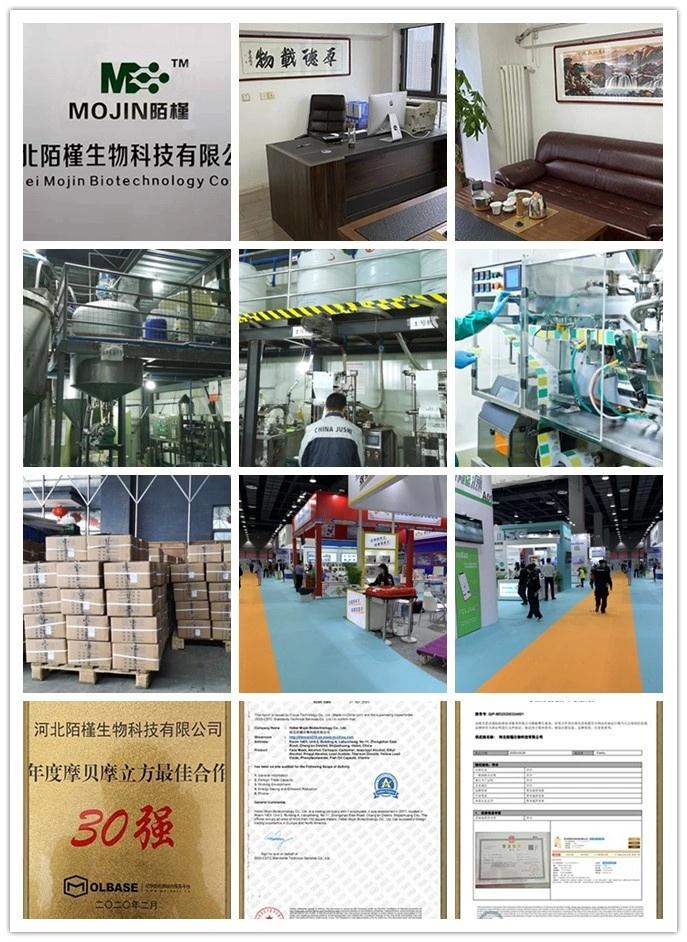 Advantage
Advantage
In stock
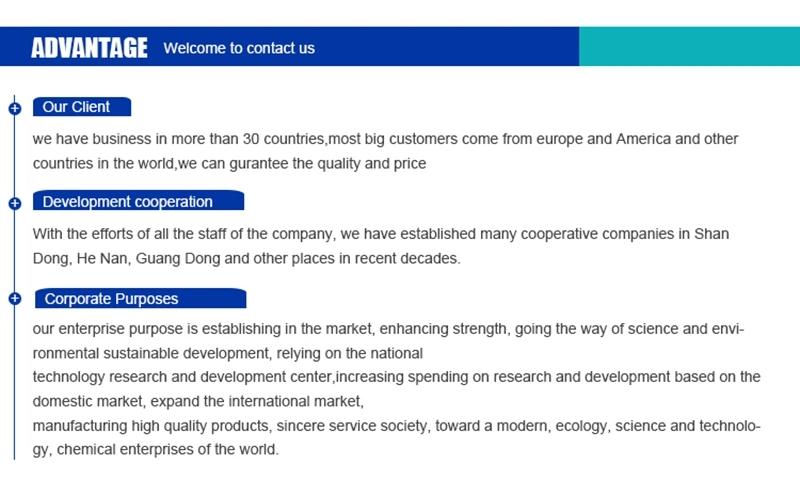
Company Profile Introduction
-
